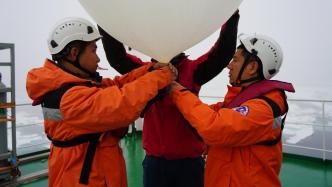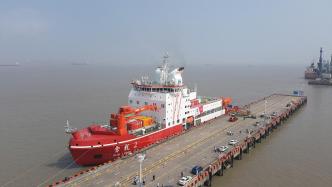
At 1:50 on August 2, Beijing time, with the completion of the ocean optical survey at the 10th station on the middeck of the "Xuelong 2" polar scientific research icebreaker, China's 13th Arctic Ocean scientific expedition organized by the Ministry of Natural Resources The first fully completed job item is generated.
The ocean optics observation project belongs to the scope of ocean scientific expedition operations. A total of 10 observation stations are arranged for this scientific expedition. This project uses professional scientific research equipment to detect the solar irradiance at different depths of the ocean to measure the absorption and attenuation process of solar radiation energy in the ocean.

On July 26, members of China's 13th Arctic Ocean Scientific Expedition team were deploying meteorological sounding balloons. Photo by Xinhua News Agency reporter Wei Hongyi
Zhong Wenli, an associate professor at Ocean University of China, said that ocean optics research can help answer a series of questions such as how solar energy enters the ocean, how it is absorbed by the ocean, and where it is finally consumed. "Relevant studies have shown that the sea surface temperature of the Chukchi Sea has increased significantly in the past 20 to 30 years, which is closely related to the ocean absorbing more solar short-wave radiation energy. important motivator.”
China's 13th Arctic Ocean Scientific Expedition Team arrived at the first operating site in the Chukchi Sea on the afternoon of July 26, Beijing time, and officially started the oceanic scientific expedition.
At present, the Oceanic Scientific Expedition is continuing. According to the schedule, the oceanic research operations in the Chukchi Sea area will end in mid-August.
